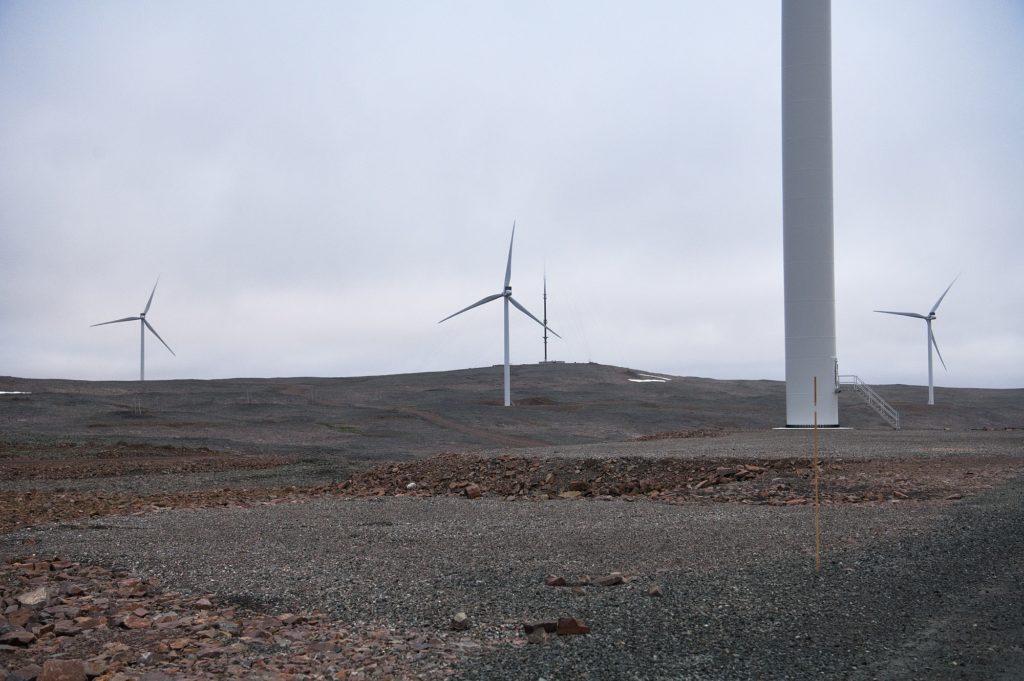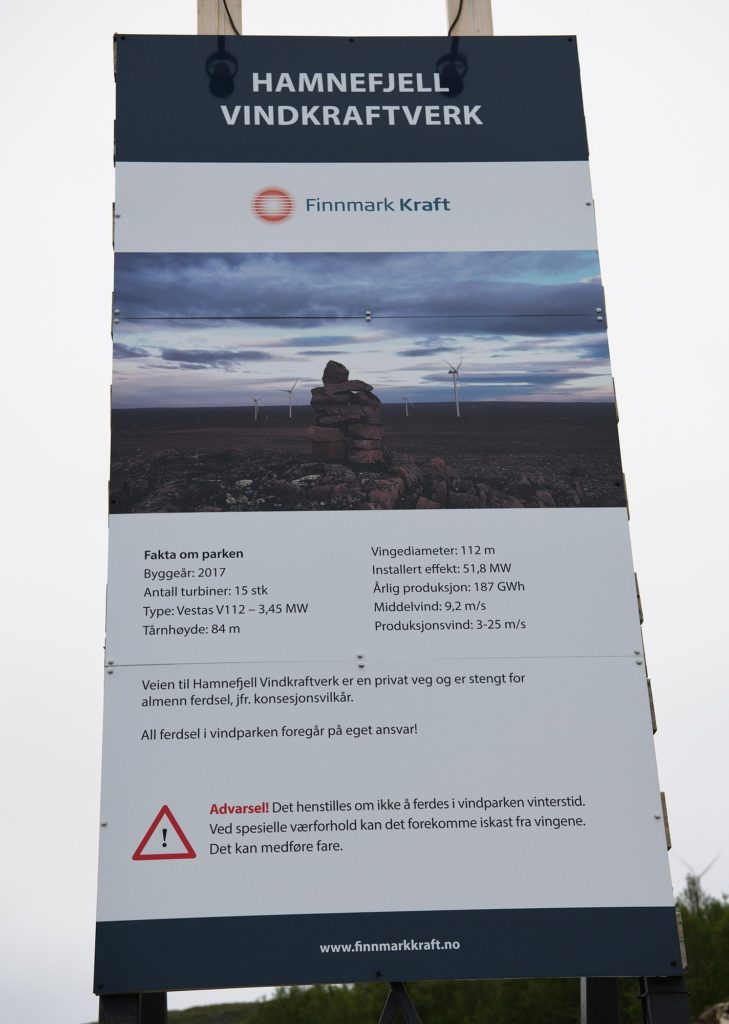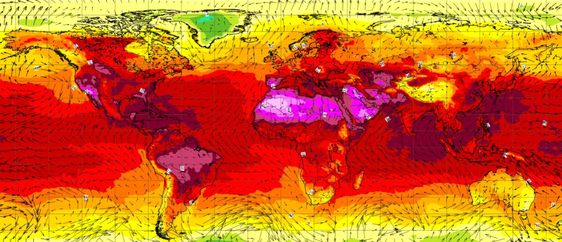
Photo: Per Inge Oestmoen Hamnefjellet Wind Power Plant – look at the dystopian landscape in the pictures, they illustrate the extent of an industrial plant in a mountain area.
Watch the NRK documentary: The Battle against the wind power turbines
By Per Inge Oestmoen, Norway
There is a misunderstanding, which has been rather widespread, that wind power plants are a viable solution to sacrifice natural areas in order to save the Earth against climate change.
However, the common denominator denoting the ecological crises is the reduction and destruction of nature. Such damage is caused by physical interventions and reduction of natural areas and ecosystems. This contributes as least as much as greenhouse gases and resultant climate changes to a worldwide crisis caused by the impact of various forms of damaging human actions.


We know that large emissions of greenhouse gases lead to negative and dangerous climate effects. However, that does in no way alter the equally important fact that the building of wind power plants in natural environments leads to reduction, fragmentation, and ruin of natural areas and ecosystems. We, therefore, need a heightened focus on nature, biodiversity, and ecosystems.
We have to fully and honestly realize that wind energy plants are a major contributor to the catastrophic loss of natural areas. This loss is a global phenomenon, and therefore it is an invalid argument to state that we must sacrifice nature and landscapes locally in order to save the global climate. Ecosystems and species all over the world are being threatened by nature reduction and habitat destruction. That is the stark reality.

The construction of industrial wind power plants in natural environments means the often irreparable reduction of and damage to environments and ecosystems including a large number of species that are impacted by the senseless wind power bonanza.
One set of environmental challenges and unfortunate practices does not legitimize extensive physical destruction of natural areas and habitats. On the contrary, the existence of many threats to nature and ecosystems makes it all the more imperative to say a resounding “NO” to the particularly destructive wind power – which is an environmental scam indeed. It is a scam of the highest order of magnitude.
The issue is that wind power has been touted as an environmentally friendly and “green” energy, whereas it consumes, reduces, or leads to the outright ruin of vast areas of landscape, natural areas and ecosystems. As such, wind power does not solve any of the world’s pressing challenges but rather contributes significantly to the catastrophic reduction of natural environments on Earth. That is what we cannot afford. We need to preserve natural environments, that is the point.
The reduction and destruction of natural areas, be it mountain regions, grasslands, wetlands, or boreal and tropical forests, is a worldwide destructive change whose long-term consequences are no less dire than climate change. This is not for the next generation. Loss of nature with habitat destruction and deforestation is a reality and a steadily ongoing process now. It needs to be stopped, for the sake of life on Earth including our lives. Wind power is absurd because it contributes greatly and dangerously to the global loss of natural environments.
SOME SALIENT POINTS:
1. The ecological footprint of humanity involves much more than merely a carbon footprint. Life on Earth will not be saved even if greenhouse gas emissions and global warming climate change were suddenly eliminated tomorrow if the worldwide physical destruction of natural areas, ecosystems, and biodiversity continues.
The total ecological footprint encompasses both carbon footprint and the catastrophic abuse and overuse of a great range of natural resources and environments, leading to the accelerating consumption of land and habitats. This is a global catastrophe that is both independent of and contributing to the severity of climate change. Natural science has demonstrated beyond doubt that the global loss of natural environments leads to the reduction of the Earth’s total carrying capacity, including the capacity of CO2 absorption. It is imperative to understand that each km2 loss of natural environment any place on Earth means a weakened ecosystem and a resultant reduced capacity to withstand any challenges and changes in the environments, both man-made and other kinds of challenges. Nothing good can come out of the large-scale reduction of Nature, and wind power plants greatly reduce Nature. Man-made physical damage to natural environments is a global ecological crisis and should be recognized as such.
Every local and global degradation or destruction of natural areas and ecosystems contributes to the ecological crisis which needs to be universally acknowledged as equally damaging, serious, and catastrophic as the climate change crisis. Both the climate change crisis and the ecological crises are man-made, and unfortunately, it is not a viable solution to try to avoid the one by deepening the other. That is why wind power (at least terrestrial wind power) is an extremely dangerous blind alley.
2. It is necessary to work for the creation of a more sustainable lifestyle and long-term resilient economic system. This involves environmental awareness with the protection of ecosystems and habitats, and a much greater degree of local production of food and general self-sufficiency based on renewable natural resources ranging from various forms of sustainable harvesting in the environment, reindeer herding in natural grazing environments to locally based agriculture and even small-scale farming in densely populated residential areas. Even in cities, environmentalism can be successfully practiced, particularly if the city is marked by moderately dense residential areas that allow significant green areas between houses and buildings. Every positive contribution counts and the point is that Nature and biodiversity have to be protected everywhere.
3. It is not about humans alone. Nature has its own value, independent of the human species. This is a major tenet of Deep Ecology, and it is perfectly valid on the ground that science confirms the intrinsic value of living ecosystems and their integrity.
4. From a religious perspective which may also legitimately be taken into account, such destruction is a crime against Creation. Our reverence for the Creator leads to the conclusion that Creation must be protected against abuse.
5. From both the religious and the scientific perspective, ecosystem damage, degradation and destruction are dangerous and irresponsible towards planet Earth be it from the ravages of industrial agriculture, deforestation, irresponsible resource extraction like mining in natural areas, or terrestrial wind power plants.
6. In April 2020, when this was written, there lived more than 7.8 billion people on Earth. That number 60 years ago was 3 billion. That means the Earth’s human population has nearly tripled in 60 years, and unfortunately, the number is still increasing. Realistically, a further increase in the human population is incompatible with sustainability in the long term. In natural science and biology, it is a widely acknowledged principle that whenever a species grows in number exceeding the carrying capacity of the environment(s) in which the species in question exists there is overpopulation. The human race must accept the fact that 7.8 billion people on Earth is an overpopulation no matter how we live. On the other hand, recent projections by the UN would indicate that a tendency towards falling fertility rates could make the picture less gloomy.

7. Centralization and too much or too dense urbanization is another blind alley. There is no sense and above all no solution in suggesting that we all live in dense cities in small flats in large apartment buildings removed from Nature in order to reduce the carbon footprint. People living in dense cities are prevented from living in a natural environment, and many nature-based activities are impossible. The dense city scenario, therefore, has grave implications that will counteract every element of responsible environmentalism and genuine sustainability, but the fact that such scenarios have been suggested testifies to the gravity of the situation – which as emphasized before cannot be solved by reducing and further destroying natural areas and ecosystems either.
8. Wind power is unstable and manifestly unreliable since no power is generated when the wind is not blowing or when the wind is too weak or too strong, the turbines have a relatively short life span and need frequent and costly maintenance. Turbine blades are basically non-recyclable and may lead to the spread of microplastics during operation. The wind power industry predictably states that ways of using these fiberglass or carbon fiber turbine blades are being developed, but it is doubtful whether the production of vast amounts of fiberglass pellets can justifiably be called an environmentally friendly practice. There is no escaping the reality that wind turbine blades are both difficult and costly to recycle. Many places in the world, therefore, have got turbine blade graveyards, large landfills where wind turbine blades from old and decommissioned turbines are simply buried in the ground. These turbine blades represent another growing environmental problem caused by wind power.
The mechanical wind turbines basically represent an unsophisticated technology. The wear on their moving parts is considerable, and maintenance will be a major and permanent expense. These moving parts are dependent on lubrication with considerable amounts of oil which will necessarily have to be changed at regular intervals. A vast number of wind turbines in natural environments also pose a risk of oil leakage to the environment.
9. Wind power is inefficient since the amount of power generated per square km2 is small. This drawback is permanent, and it is another decisive argument against wind power.
10. It is imperative that we take into account all these aspects if we want to develop and stand for responsible and sound environmentalism and relate to the realities.
There is no escaping the reality that the allure of wind power remains a blind alley, like all human activities and strategies that lead to the reduction and extensive damage of natural areas, ecosystems, and habitats. Wetlands, forests, mountain areas, and grasslands all have their unique ecosystems, and all need to be protected. That also means these environments must be protected against ecosystem destruction by wind power plants.
Wind power plants do not belong to Nature, and we need to say no to the wind power madness.
In the long run, ecosystem restoration is mandated and necessary in order to recreate natural environments.




2 Comments
Pingback: Goal 7: Affordable and Clean Energy - Bergensia
Pingback: No giant wind farm off the Færder coast! - Bergensia